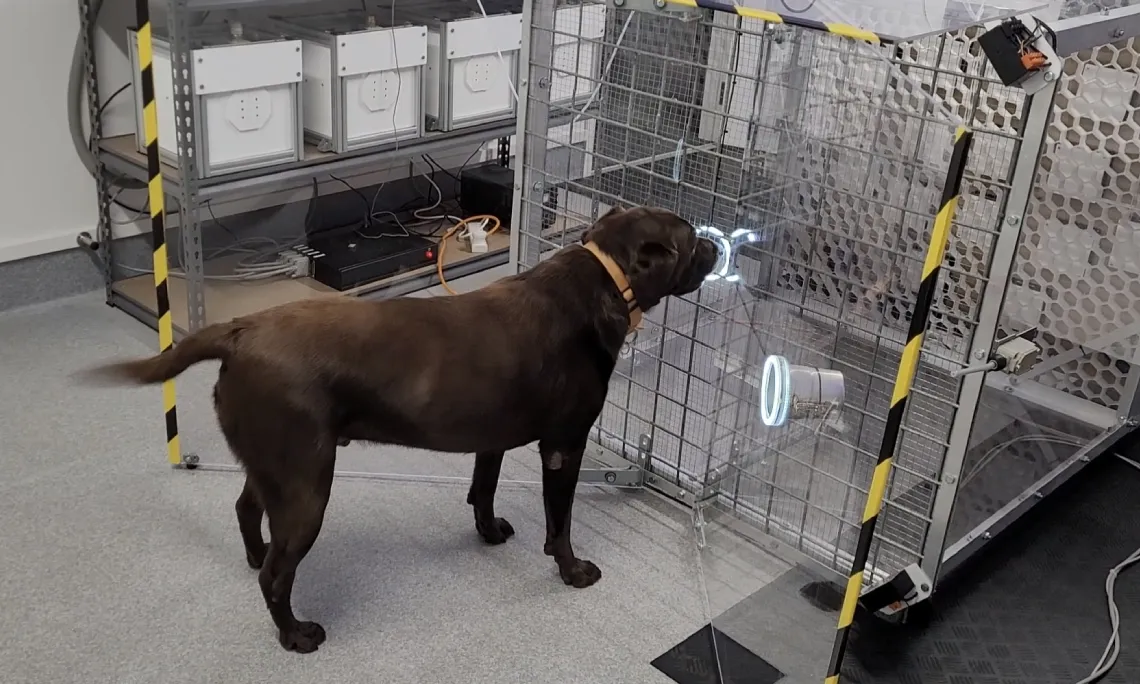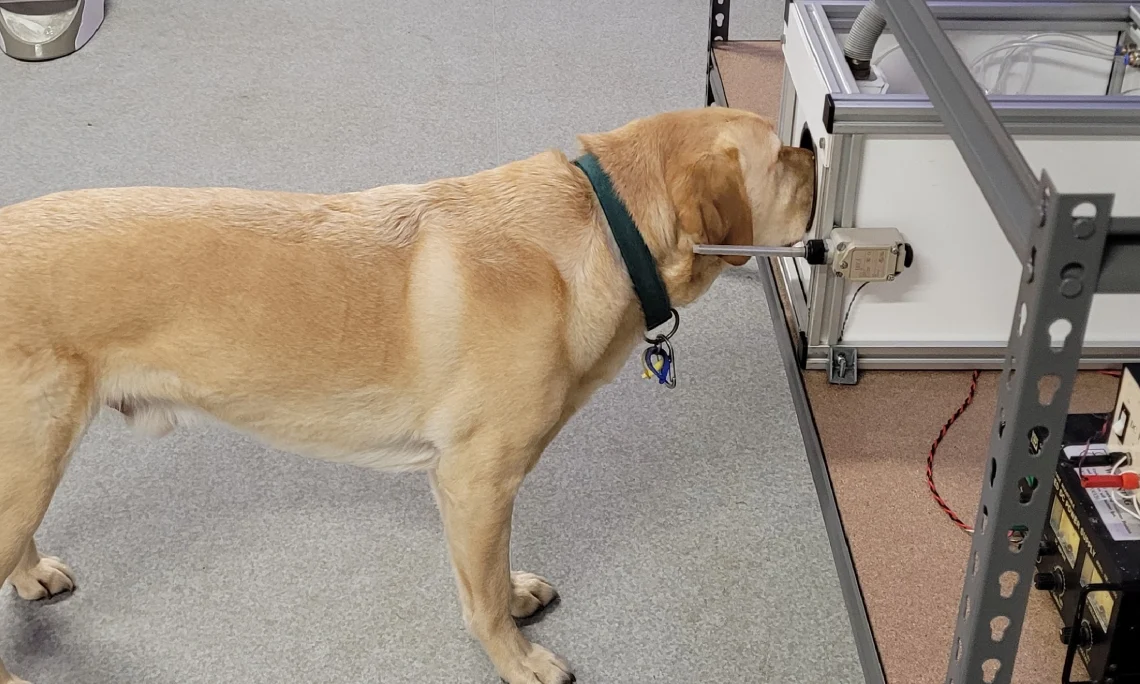Odour timing perception project
Animals may distinguish mixed odours by detecting tiny differences in arrival time. This theory is untested in dogs, despite their key role in scent detection work.

Odours from different sources, like a cup of coffee and slice of pizza, mix as they travel from the source to your (or a dog’s) nose. Yet, somehow, we are still able to perceive them as distinct objects. One theory that might explain this suggests that animals can detect small differences in the time that odours from different sources arrive at the nose (or antennae in insects).
This strategy could work because odours that come from different sources can remain separated in the odour plume (see figure). Most of the evidence in support of this hypothesis has been produced with insects, and no research has been conducted on dogs, the species that we rely on the most for odour source detection.

Our research
We are examining dogs’ ability to detect differences in odour arrival timing. To do this, we have constructed an apparatus which contains one of the fastest odour delivery devices available and that can be independently operated by a dog. The dog uses the apparatus to tell us when the parts of the odour mixture arrive at the same time or at slightly different times. By adjusting the timing until the dog can no longer respond accurately, we can determine their perceptual limits related to timing detection.
We are also using a wind tunnel to test dogs’ ability to determine the difference between mixtures released from the same source and different sources, which will complement the timing research.
This research will provide key insights into a fundamental feature of olfactory perception in dogs. We are collaborating with a team of researchers at the University of Otago to perform cross-species comparisons with honey bees and humans on this topic.

Support
This research is supported by the Royal Society of New Zealand.